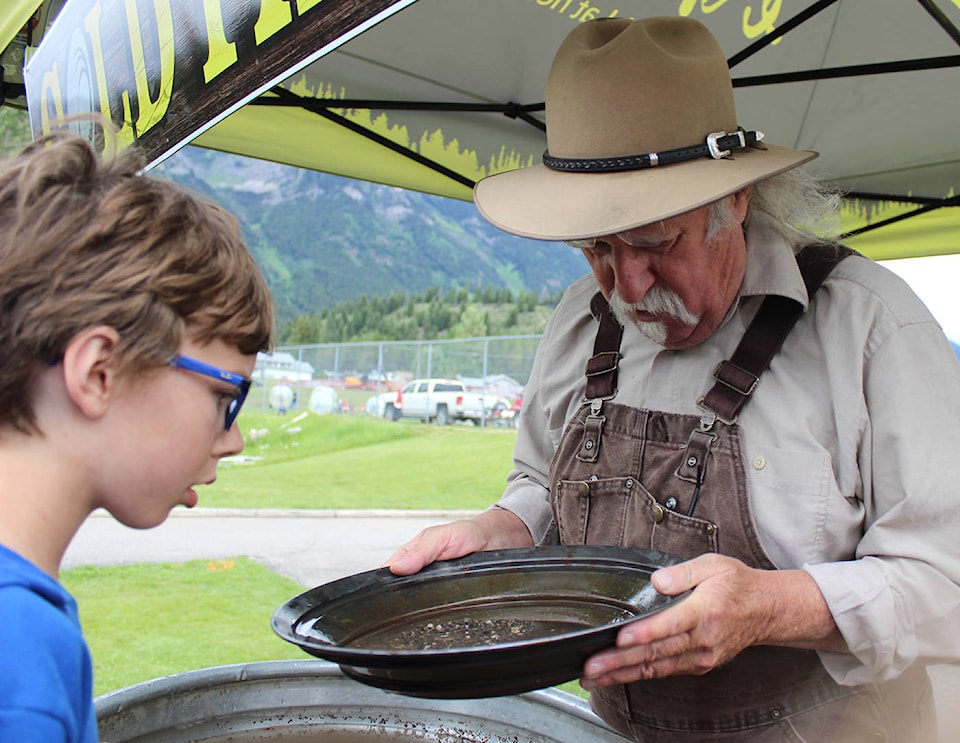I don’t know how many times, while walking along a stream bank moving from one fishing hole to another, I’ve spotted what looked like a possible spot to try my hand at panning for gold.
On a similar note, I have also come across some pretty promising stretches of water that look like they might contain a few good fish while working my way along a stream bank panning for gold. The simple fact of the matter is that when I see a bit of colour in the bottom of my gold pan I get exciting – the same way I do when I get a two or three pound rainbow trout on the end of my line.
The only real difference between the two activities is that while fishing has cost me a small fortune over the years in rods and reels and assorted related gear, gold panning has cost me relatively little and has paid off, well, let’s just say I’ve found enough to keep me wanting to continue trying my hand at it.
While there are plenty of people who have caught gold fever and laid out thousands of dollars only to recover hundreds, I have managed to pan just about enough to pay for my gas and sandwiches, plus a little extra for a small amount of gear.
You don’t need a lot of gear to enjoy yourself. All you need is a gold pan, just enough skill to pan properly, and the knowledge of where to look. A little luck can also come in handy.
Gold pans come in a variety of sizes ranging from eight inches in diameter up to 16 inches, and can range in price anywhere from $10 for a cheap plastic pan all the way up to $40 for a quality metal pan.
There are those who will tell you that plastic gold pans are better than metal pans. Both serve a purpose. While I prefer to use a metal pan, I do have a Keene 12-inch green plastic pan that I use in conjunction with a metal detector. It is well made and has a good system of riffles – indentations built into the pan’s sidewall designed to held trap small flakes and particles of gold. Inside my pack I have a small, collapsible shovel, my 50 year old Estwing prospector’s pick, a plastic scoop, a plastic snuffer bottle (used for sucking fine gold from your pan), some tweezers and a commercially made crevice tool which is essentially a piece of metal, long enough and thin enough that it can be used to help get at gold that has settled into the cracks and crevices of rocks. Sometimes I bring along a pry bar to help move heavy rocks. I also bring along both neoprene waterproof gloves and leather ranch gloves. Digging around in sand and gravel can be mighty hard on the fingernails and hands. A five-gallon plastic pail can come in mighty handy for carrying all of your gear. Turn it upside-down and you’ve got something to sit on.
Read more: Panning for gold pioneer style
Read more: Great adventures of gold seekers in Scotch Creek
Read more: Looking forward to a shiny new year
The actual panning process is not really all that complicated and, like most things, practice makes perfect.
Once you’ve found a potential placer deposit, scoop some gravel into your pan, immerse it into the stream and then begin agitating in a side-to-side motion. This will cause the heavier materials within the mixture of rocks, pebbles, mud and sand to sink to the bottom of the pan. Rocks, sand and gravel are typically about five- to six-times heavier than water. Gold is 19.3 times heavier than water.
In the old days, prospectors used panning to determine where the most productive areas were along a stream bed. They would then shift to equipment such as dry rockers and wet sluices that could process larger volumes of sand and gravel more quickly and more efficiently. Early sluice boxes were constructed from wood. Most modern sluices are constructed from light weight aluminum. Water is used to wash potentially gold laden material along the length of the box, which is positioned at a slight downward angel. Gravity separates the gold from the lighter rocks and sand as it moves along. Modern sluice boxes use riffles or obstructions that slows the free flow of sand and gravel. These riffles form pockets behind which gold will accumulate. The gold recovered is mostly in the form of small nuggets, flakes and flour gold.
They say that gold is where you find it. So is having fun.
@SalmonArm
newsroom@saobserver.net
Like us on Facebook and follow us on Twitter
